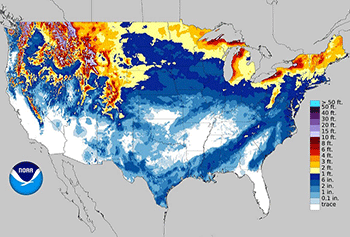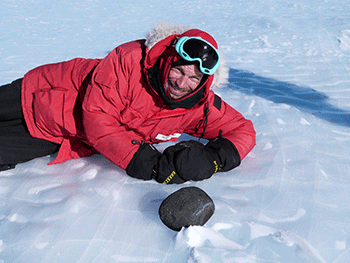Changing toothpastes? Change your toothbrush
Science News for Students is an award-winning, free online magazine that reports daily on research and new developments across scientific disciplines for inquiring minds of every age — from middle school on up

The bristles of your toothbrush can absorb triclosan from toothpaste, a new study shows. Later, that chemical can come out again and expose your mouth. ~~ TOMFREEZE/ISTOCKPHOTO.
When the U.S. government banned the germ-killer triclosan from soaps and other cleaning products, many people decided to avoid items that still had it, such as toothpastes. But changing toothpastes may not help people avoid the chemical. Why? Triclosan can stick around in an old toothbrush, exposing people again even after using a new toothpaste. The good news: New data show that some types of toothbrushes pose less risk of exposing people to stored triclosan.
—Alison Pearce Stevens

U.S. snow map
This map shows snowfall over the lower 48 U.S. states from the start of the winter through January 4, 2018. Every state has seen snow fall over at least a portion of it. ~~ NOAA.
Wacky winter dumps snow on every single U.S. state
This map illustrates the total snowfall for the lower 48 U.S. states from the start of winter through January 4. (Alaska and Hawaii had snow too.) An overly wavy jet stream pulled a surge of cold air into the Deep South and northern Gulf of Mexico, bringing thundersnow to South Texas. As storms blew east, near-record snow accumulated from Florida to New England. Arctic warming, due to climate change, may have played some role, scientists say. How? Climate change slowed the jet stream, allowing it to meander and bring cold air into typically warm states.
—Matthew Cappucci
Stan Love
Stan Love poses next to a meteorite he found. ~~ ANSMET/Case Western University.

Hot on the trail of Antarctic meteorites
Up to 84,000 meteorites pelt Earth each year. Most are nearly impossible to find, having landed in water or been hidden by plants. But in the vast emptiness of Antarctica, spotting these space rocks can be as easy as black on white. That’s why teams of scientists — including astronaut Stan Love, pictured here — brave Antarctica’s extreme conditions each year to hunt for meteorites. This story follows the trek of a space rock from its discovery in an ice field to a lab, where researchers probe the rock’s origins (perhaps some asteroid or the moon) and then send bits of the meteorite to a library.
https://steemit.com/contest/@best10/6aak9b-contest